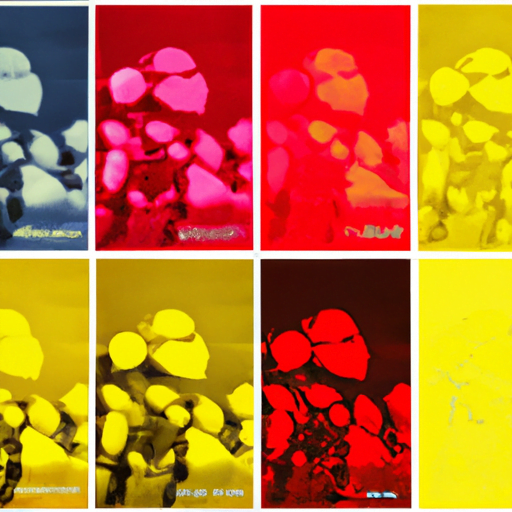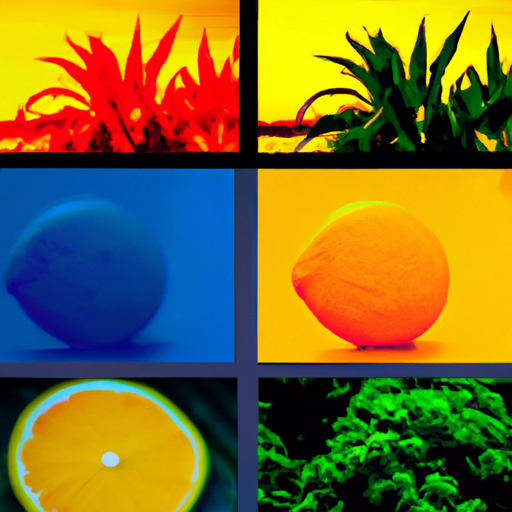
-
Table of Contents
The Influence of Nature in Graphic Design

Nature has always been a source of inspiration for artists and designers. Its beauty, diversity, and harmony have captivated creative minds throughout history. In the world of graphic design, nature continues to play a significant role, influencing the aesthetics, color palettes, and overall design principles. This article explores the various ways in which nature influences graphic design and how designers can harness its power to create compelling and impactful visuals.
The Aesthetics of Nature
Nature offers a vast array of visual elements that can be translated into graphic design. From the intricate patterns found in leaves and flowers to the sweeping curves of landscapes, nature provides an endless source of inspiration for designers. By incorporating these natural aesthetics into their work, designers can create visually appealing and engaging designs.
For example, the use of organic shapes and forms inspired by nature can add a sense of fluidity and movement to a design. These shapes can be seen in logos, illustrations, and even typography. By mimicking the curves and lines found in nature, designers can create a sense of harmony and balance in their work.
Color is another aspect of nature that greatly influences graphic design. The vibrant hues of flowers, the calming blues of the ocean, and the warm tones of a sunset all evoke different emotions and moods. Designers can use these colors to create a specific atmosphere or convey a particular message in their designs.
Biophilic Design
Biophilic design is a concept that recognizes the innate human connection to nature and seeks to incorporate natural elements into the built environment. This design approach has gained popularity in recent years, as studies have shown the positive impact of nature on human well-being.
In graphic design, biophilic principles can be applied by incorporating natural elements such as plants, animals, and landscapes into the design. This can be done through illustrations, photographs, or even the use of natural textures and materials. By bringing nature into the design, designers can create a sense of calm, tranquility, and connection with the natural world.
One example of biophilic design in graphic design is the use of nature-inspired patterns. These patterns can be found in various design elements, such as wallpapers, textiles, and packaging. By incorporating these patterns, designers can create a sense of harmony and connection with nature, even in urban environments.
Sustainability and Environmental Awareness
As the world becomes more aware of the environmental challenges we face, sustainability has become a crucial consideration in design. Graphic designers have a unique role to play in promoting environmental awareness and encouraging sustainable practices.
Nature can serve as a powerful symbol in communicating environmental messages. By using images of endangered species, deforestation, or pollution, designers can raise awareness and inspire action. Infographics and data visualizations can also be used to present complex environmental issues in a visually engaging and accessible way.
Furthermore, sustainable design practices can be inspired by nature. Biomimicry, for example, is an approach that looks to nature for solutions to design challenges. By studying natural systems and processes, designers can create more sustainable and efficient designs.
Case Studies
Several case studies demonstrate the influence of nature in graphic design and its impact on the audience. One such example is the logo redesign of the World Wildlife Fund (WWF). The iconic panda logo not only represents the organization’s mission to protect endangered species but also serves as a reminder of the beauty and fragility of nature.
Another case study is the branding of Patagonia, an outdoor clothing company. The company’s logo features a mountain range, reflecting its commitment to environmental conservation and outdoor exploration. This logo has become synonymous with the brand’s values and has helped establish a strong connection with its target audience.
Statistics on the Influence of Nature in Graphic Design
- According to a study by the University of Exeter, exposure to nature-inspired design elements can improve mood and well-being.
- A survey conducted by the American Society of Landscape Architects found that 81% of respondents believe that biophilic design elements, such as green roofs and living walls, have a positive impact on mental health.
- In a study published in the Journal of Environmental Psychology, researchers found that images of nature in the workplace can increase productivity and creativity.
Conclusion
Nature has a profound influence on graphic design, shaping aesthetics, inspiring sustainable practices, and promoting environmental awareness. By incorporating natural elements into their designs, designers can create visually appealing and emotionally engaging visuals. The use of organic shapes, nature-inspired color palettes, and biophilic design principles can help establish a connection between the audience and the natural world. As the world becomes more conscious of environmental issues, graphic designers have a unique opportunity to use their skills to promote sustainability and inspire positive change. By harnessing the power of nature, designers can create impactful designs that resonate with their audience and contribute to a more sustainable and harmonious future.
